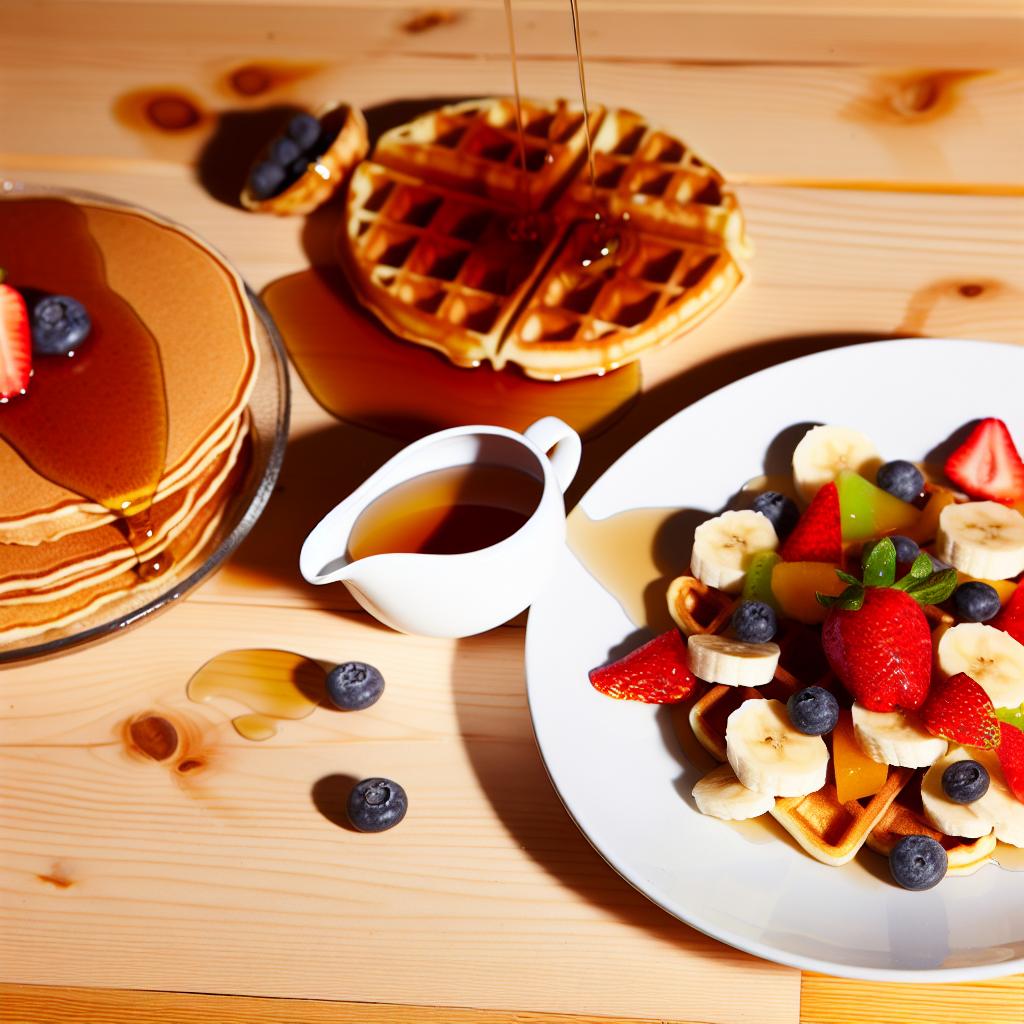
Dive into the delicious dilemma of choosing between pancakes and waffles for the ultimate breakfast treat.
Exploring the Origins of Pancakes and Waffles
The history of pancakes stretches back to ancient times, with evidence of pancake-like foods being enjoyed by Greeks and Romans. These early versions were made from wheat flour, olive oil, honey, and curdled milk. Waffles, on the other hand, have their roots in the Middle Ages. Originating from the iron-cooked cakes called 'wafer', they evolved over centuries in Europe, particularly in Belgium, where they became known for their distinctive grid pattern.
While pancakes found their way across the globe, adapting to the culinary traditions of many cultures, waffles became a symbol of celebration in Europe, often associated with fairs and religious feasts. Today, both pancakes and waffles have secured their spot as beloved breakfast staples in the United States, each with a rich history that adds to their allure.
Texture and Taste: A Comparative Analysis
Pancakes are renowned for their fluffy, soft texture that soaks up syrup and butter with ease. Their batter, made from a simple mix of flour, eggs, milk, and a leavening agent, results in a tender, cake-like consistency. Waffles, in contrast, are known for their crisp exterior and light, airy interior, which comes from a batter similar to that of pancakes but often includes additional fat and sugar to achieve the characteristic crunch.
When it comes to taste, both pancakes and waffles offer a comforting, slightly sweet flavor that serves as a blank canvas for a myriad of toppings and mix-ins. From the classic maple syrup and butter to fresh fruit, chocolate chips, and whipped cream, both can be customized to satisfy any craving.
Customization and Creativity in Breakfast Choices
The versatility of pancakes and waffles is a testament to their popularity. Pancakes can be easily adapted to include a variety of ingredients, such as blueberries, bananas, or chocolate chips, mixed directly into the batter. They can also be made with alternative flours for those with dietary restrictions or preferences.
Waffles offer a different kind of creativity. Their deep pockets are perfect for holding toppings, and the batter can be seasoned with spices or extracts for an extra flavor boost. Moreover, waffles can be used as a component in other dishes, like chicken and waffles, or even as a base for savory toppings, transforming them into a lunch or dinner option.
Nutritional Considerations for a Balanced Breakfast
While indulging in pancakes or waffles is a delightful treat, it's essential to consider their nutritional value when planning a balanced breakfast. Pancakes and waffles made from refined flour can be high in carbohydrates and low in fiber. However, by choosing whole-grain options or adding oats, nuts, and seeds, one can increase the fiber and nutrient content.
To create a more balanced meal, complement pancakes or waffles with sources of protein such as Greek yogurt, eggs, or nut butter, and include a serving of fruit for additional vitamins and fiber. This combination will help slow down the absorption of sugars, provide sustained energy, and keep you feeling full longer.
The Cultural Impact and Popularity Trends of Breakfast Classics
Pancakes and waffles have transcended breakfast time and have become ingrained in American culture. They're served at brunches, featured in competitive eating contests, and celebrated through national food holidays. The popularity of these breakfast classics has also been bolstered by their portrayal in media, with films and television often depicting cozy family breakfasts brimming with stacks of pancakes or waffles.
Social media has further influenced their popularity by showcasing creative recipes and stunning presentations, inspiring food enthusiasts to experiment and share their culinary creations. Whether it's a nostalgic nod to childhood or a modern twist on a classic dish, pancakes and waffles continue to captivate the hearts and taste buds of people across the nation.


.jpg)





.jpg)



.png)
0 Comments